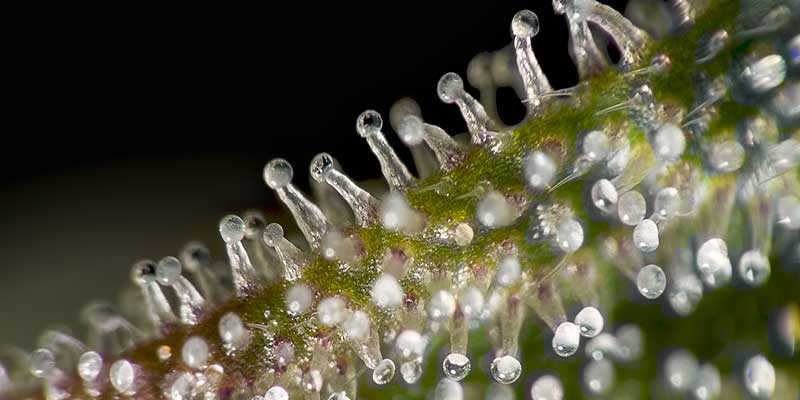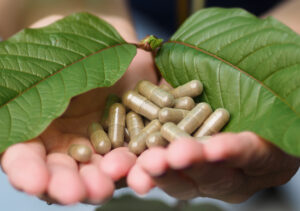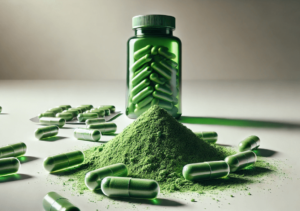If you’ve ever taken a look at a high-quality cannabis bud, you might have wondered why it looks like it’s sprinkled with sugar and what actually makes the bud so sticky.
The answer is trichomes – the tiny, hair-like bumps that cover the cannabis plant.
These outgrowths evolved to protect the plant from external threats and they are what allow cannabis to survive in extreme conditions. Trichomes are rich in both terpenes and cannabinoids which are the compounds that provide the plant with protection from UV rays and predators.
Luckily for us, the plant’s protection system is also extremely beneficial to our health, and cannabis growers have developed mechanisms to maximize the production of these tiny parts of the cannabis plant.
This current era of growing techniques has given birth to the more than 800 cannabis strains we enjoy today, which all have different cannabinoid and terpene profiles.
Since trichomes are so important to our cannabis-enriched lives, it’s super important to fully understand them and their place in the botanical world.
I’ll explore the functions and types of trichomes found in cannabis, and also discuss ways to maximize their growth (if you’re growing your own medicine), and how to separate them from the rest of the plant material for use in everyday consumption.
Definition and function
Trichomes are found on many plant species. The word “trichome” comes from the Greek word “trichōma” which means “hair”, and to the naked eye, trichomes do look like fine, tiny hairs.

Trichomes grow on almost every part of the plant as a defense mechanism from potential threats. This coating of hairs protects the plant from UV radiation, repels insects, prevents the growth of fungus, and regulates temperature.
Trichomes located on the root of the plant help absorb necessary minerals and water from the soil.
Some carnivorous plants even produce trichomes to catch prey (hence the stickiness of those plants).
When it comes to cannabis, trichomes have many functions, but most importantly to us, trichomes produce pot’s active substances called cannabinoids, like THC and CBD, as well as terpenes and resin.
The resin and aromatic terpenes repel insects and other animals. For more persistent predators, it is suspected that the psychoactive THC plays a role in preventing their attacks, as some insects die when they ingest THC.
Trichome development
Most trichomes begin to grow in the flowering stage. When a female cannabis plant begins to reproduce and form flowers it grows trichomes as self-defense – they grow all over the plant, but especially on the flowers, the most important part for the plant’s reproduction.
And at this point, trichomes start to produce substances which later develop into cannabinoids.
Types of trichomes
There are three basic types of trichomes on the surface of the cannabis plant:
- Bulbous trichomes consist of a tiny “stalk” and a gland where the resin is produced. These are the smallest trichomes on the plant.
- Capitate sessile (meaning globular-shaped head) trichomes are larger, more numerous, and grow more densely.
- Capitate-stalked is the most valuable for us consumers since they contain the highest levels of cannabinoids and terpenes. They are the largest trichomes and can be seen with the naked eye – these are the so-called ‘crystals’ which stick to your fingers when you touch the bud.
Variables in Trichome Development
The number of trichomes a plant will produce in its life depends on several factors, including the plant’s genetics, the amount of light it’s exposed to and environmental factors. Of course, growing expertise plays an important role in trichome development as well.
Genetics
Genetics play an important role in the development of trichomes. Some strains like White Widow or G13 are known to have more trichomes than others. However, choosing the right seeds doesn’t necessarily guarantee you’ll have as many of these powerful white crystals as you’d expect.
Light
When it comes to growing cannabis and making sure the plant produces as many trichomes as possible, light exposure is probably the most important aspect.
When the plant is exposed to light, especially UV light, it tends to produce more trichomes, in order to protect the stems and flowers from radiation. That’s why strains that are grown in regions with more sunlight and UV rays, like equatorial regions, produce more trichomes.
Also, those in the cannabis cultivation business use UVB fluorescent lights to maximize growth, since UVB positively affects the synthesis of cannabinoids and terpenes.
Humidity and temperature
The right combination of temperature and humidity can also alter the number of trichomes that grow around the flowers. By decreasing the humidity level to 30%, and by not allowing the temperature to go over 26°C (80°F), growers can trick the plant to produce more trichomes in order to protect itself.
Higher temperature will not reduce the formation of crystals, but it can potentially ruin the potency of cannabinoids and other substances inside.
You can easily check if the temperature is right by smelling the buds. If the smell is too pungent, the temperature is probably too high and should be turned down.
Other factors
Besides the ones I mentioned, there are other factors that play into the production of trichomes. Airflow, water and oxygen levels all need to be optimized for trichomes to fully develop.
Trichomes and harvesting
Trichomes, like the cannabis plant itself, have a lifecycle — as the plant matures, so do the trichomes. We can identify this through the changes in their color.
The color of trichomes tells us a lot about the development of the plant, including the cannabinoid contents. Many growers look at trichomes to find the best time to harvest their plant.
The change in color is difficult to see without a magnifying glass. During the last weeks of flowering, trichomes are checked regularly for clues about their development.
When trichomes are still completely translucent, they are in the process of producing cannabinoids and the plant is not yet ready for harvest. When they begin to turn milky white, it’s time to get ready for the harvesting window.
When most of the trichomes have turned cloudy white, the trichomes have reached peak levels of cannabinoids – harvesting the plants now will give you the maximum psychoactive effects later on, once the buds have been dried and cured.
Trichomes and flower potency
Keep in mind that more trichomes do not necessarily equal more THC. Because of genetics and cross-breeding, every strain is unique, with different levels of terpenes and cannabinoids. Trichomes can also contain higher levels of CBD which is known to diminish the psychoactive effects of THC.
As you can see, a lot of pieces of the puzzle have to come together to get trichomes with the exact cannabinoid levels that we are looking for. Fortunately enough, licensed producers of cannabis are experts in developing/growing strains with all sorts of different cannabinoid levels, so we can reap the benefits of their expertise.
How to separate trichomes from the bud
When we smoke-dried flowers we want to keep as many trichomes on them as possible. But that is sometimes tricky to do, because as we touch and grind the buds, trichomes fall off, robbing us of weed’s precious effects.
That’s why many users prefer to use vaporizers to avoid losing these precious crystals. There are also “crystal catcher grinders”, which have a special chamber designed to collect trichomes, resulting in a powdery substance known as kief.
Many other cannabis products are made from trichomes. The fine art of making hashish relies on separating the plant’s trichomes from the flowers itself, using several techniques we’ll touch upon right now.
Hand rolling
Hand rolling is definitely the easiest way to separate trichomes from the buds and almost everyone with a little bit of patience can do it. If you decide to give it a go, know that it’s better to use fresh flowers instead of dried.
To start separating the trichomes, just gently compress and roll the buds in your palms for a few minutes to break the trichomes from the plant and to gently squeeze out oils and resin. After a while, you’ll notice a dark sticky layer on your palms. That’s what we want.
When you get enough material gathered, just rub your palms together (without the weed, of course) to form small pieces of “finger hash”. The hash should be black and should look like a worm, sort of. This is a very popular method of making hash in Nepal, India and Kashmir.
Dry sifting
Dry sifting is a very ancient and traditional technique of making hashish, and it originated in Morocco. This type of trichome separation is a bit different, as it requires an additional piece of equipment — a sieve.
To get started, put some dried buds in a sieve and move them around. The powder that falls out is the trichomes (or commonly known as kief), which you can sprinkle on a joint, pack a bowl, or process it further into hash.
Hot pressing (rosin-tech)
By pressing the buds between two hot surfaces you’ll separate the trichomes and juices from the plant and, best of all, you can do this at home by using a regular hair straightener.
Just put a bud between two pieces of parchment paper and then press them with hair straightener plates. The rosin you get from heat and pressure is full of trichomes and more potent, compared to just smoking dried flowers on their own. Once you collect enough rosin, you can dab it or vape it.
Ice water
This is a similar technique to alcohol extraction and is what is used when making “bubble hash” or “ice water hash” as some call it.
Ice water extraction is done by fully soaking the buds with cold water and ice, until the water temperature goes down to about 0-2°C, after which it is stirred and sifted through several screens of different densities. The finest sieve holds the highest quality hash, which is then dried for about a week.





antoine October 4, 2018 at 6:14 pm
Wow, what a great article full of nice surprises and information. Definitely a keeper for me!
Luka October 8, 2018 at 8:32 am
Thank you Antoine!
Connie Authier October 22, 2018 at 2:49 pm
Thank you for the info...very useful in my world.
Helena October 23, 2018 at 8:17 am
Thanks, Connie!
Soso January 21, 2019 at 1:04 pm
Very informative article well written and covered all the bases. Would have liked more in depth info on terpenes and cannabinoids. But this is wonderful article definitely bookmarking
Helena January 21, 2019 at 4:52 pm
Hey, we have articles about terpenes and cannabinoids on our website. Check out our archive page or try using the search box.
TyperTV May 21, 2019 at 9:08 pm
I would argue that licensed cannabis cultivars and cultivation’s that a in the legal market don’t actually have great genetics or have the years of expertise. As to quote it’s not the licenses producers who are the experts but the farmers market who built the foundation for those “licensed producers” who have continued to fail is patients. So I would highly argue that fact that those people are just living off the success of people who are experts or stole the genetics from real experts. “Fortunately enough, licensed producers of cannabis are experts in developing/growing strains with all sorts of different cannabinoid levels, so we can reap the benefits of their expertise.”
Maurice June 2, 2019 at 6:26 pm
What if you have a glass tube or any tube loaded with cannabis packed up with entry and exit and shooting down with A C02 tube depending how long and thick 2 grams 7 grams 30 grams etc !! So it will drip with cristals trychomes and thc cbd !!
Ripper September 22, 2019 at 3:25 am
You want to harvest when the trichs are cloudy not amber. If the trichs are amber they have gone past harvest and the thc has begun to degrade and convert into cbn and fall off the plant.
Shahadda November 13, 2019 at 11:59 pm
Hey I'm I know that the cannabis plant and I have a question can it adorn the chemicals from dish soap